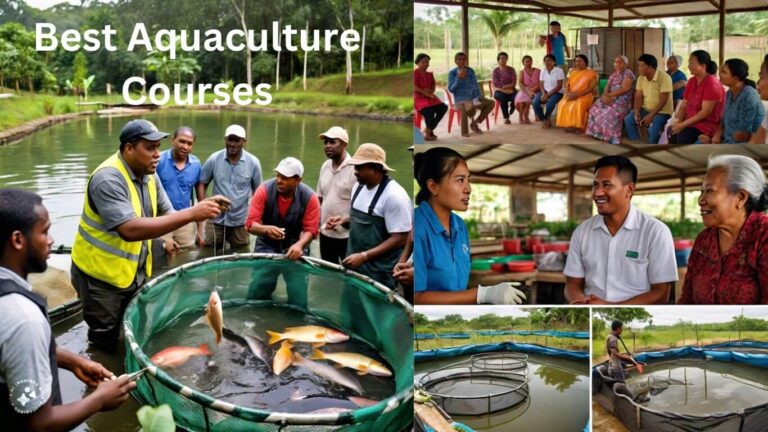How to scale your home fish farm into a commercial operation is the question every farmer should be asking because it’s a rewarding endeavor. It provides not only personal satisfaction but also the potential for significant financial returns.
Whether you started with a few tanks in your backyard or a small indoor system, transitioning to a commercial scale involves careful planning, investment, and understanding of both aquaculture and business principles.
This guide will walk you through the essential steps on how to scale your home fish farm into a commercial operation.
Assess Your Current Setup and Capabilities
Before you dive into how to scale your home fish farm into a commercial operation, you need to assess the following;
1. Evaluating Your Existing Infrastructure: Examine your current fish tanks, or fish ponds, filtration systems such as RAS, and overall layout. Determine what can be scaled up and what needs to be completely overhauled or replaced.
2. Analyzing Production Capacity: Understand the limits of your current production. How many fish can you raise effectively? What are your growth rates and mortality rates? This data will inform your scaling efforts. That is how is crucial to start keeping records on your farm from day one.
3. Identifying Strengths and Weaknesses: What aspects of your current operation are working well? Where do you face challenges? Identifying these will help you leverage strengths and address weaknesses in your commercial setup.
Develop a Comprehensive Business Plan
A solid business plan is the foundation of any successful commercial venture. Your business plan should include:
1. Market Research: Identify your target market. Are you selling to local restaurants, grocery stores, or directly to consumers? Understand your competitors and market demand.
In fact, most fish farmers go out of business because of a lack of market for their farm produce. That is why you must research and plan your market very well before considering going commercially.
2. Financial Projections: Estimate your startup costs, operational costs, and revenue projections. This should include costs for infrastructure, feed, labor, and marketing.
3. Marketing Strategy: Develop a plan for how you will market and sell your fish. This could include online sales such as Social Media Marketing. You may also consider farmers’ markets or partnerships with local businesses.
4. Regulatory Compliance: Research the legal requirements for commercial fish farming in your area. This could include permits, health regulations, and environmental compliance.
This would prevent your farm from shutting down by authorities in strict regulatory countries.
Upgrade Your Infrastructure
Scaling up requires significant upgrades to your infrastructure. Consider the following:
1. Larger Tanks and Ponds: Depending on your chosen fish species, you’ll need larger tanks or even outdoor ponds to accommodate a higher volume of fish. The ponds can be tarpaulin, concrete, earthen, or any other type of fish pond.
2. Advanced Filtration Systems: As you increase the number of fish, maintaining water quality becomes more challenging. Invest in high-capacity filtration systems to ensure a healthy environment for your fish. The Recirculating Aquaculture System (RAS) is recommended for commercial fish farms. You may consider taking a course in the RAS to learn more and implement it yourself.
3. Automated Feeding Systems: Automated feeders can help ensure your fish receive consistent nutrition, reducing labor costs and increasing growth rates. The automated Feeders will also save you a great time and energy.
4. Water Quality Monitoring Systems: Implement systems that can monitor water quality parameters in real-time, such as pH level, ammonia, nitrites, and nitrates.
This will help you maintain optimal conditions and quickly address any issues. Please note that poor water quality is deadly in fish farming and I have had experience of losing hundreds of fish through that.
Remember the popular maxim that “The wise man learns from his mistakes but the wisest man learns from the mistakes of others”. You can avoid the same loss I have had on my farm by acquiring a water quality monitoring system to always test and correct your water before is too late.
Select the Right Species
To be successful in learning how to scale your home fish farm into a commercial operation, choosing the right species of fish is crucial. Consider the following factors:
1. Market Demand: Select species that have a high market demand in your area. Common commercially viable species include tilapia, catfish, trout, and salmon.
2. Growth Rates: Faster-growing species can provide quicker returns on investment.
3. Ease of Breeding and Raising: Some species are easier to breed and raise than others, reducing labor and resource costs. Examples of quicker-raising fish are catfish and tilapia per my experience.
4. Environmental Tolerance: Choose species that can thrive in your local climate and water conditions. But the good news is that you can sometimes control the environment.
Implement Efficient Farming Practices
To run a successful commercial operation, efficiency is key. Implement the following practices:
1. Stock Management: Implement practices such as staggered stocking and harvesting to ensure a continuous supply of fish. Try not to overstock your fish because it leads to cannibalism and competition for resources. Also, avoid understocking because you will leave a lot of profit on the table.
2. Health Management: Regularly monitor fish health and implement biosecurity measures to prevent diseases. This includes quarantine protocols for new stock and routine health checks.
You need to constantly monitor the water quality with the right monitoring tools to ensure the good health of stocked fish.
3. Sustainable Practices: Consider sustainable farming practices to minimize environmental impact and appeal to eco-conscious consumers.
This could include Recirculating Aquaculture Systems (RAS) and Integrated Multi-trophic Aquaculture (IMTA).
4. Implement Fish Sorting: You need to always sort or grade your fish. Fish sorting is when fish are separated into groups with similar characteristics such as size, species, color, and others. This reduces cannibalism and mortality on your farm. It also ensures optimal growth of your fish.
Build a Skilled Team
As you scale up, you’ll need a team to help manage operations. Consider the following:
1. Hiring Experienced Staff: Look for individuals with experience in aquaculture, biology, or related fields.
2. Training Programs: Invest in training programs to ensure your staff is knowledgeable about best practices and the latest technologies. You can again consider the right course I just mentioned in point 1 above.
3. Division of Labor: Assign specific roles and responsibilities to team members to ensure efficient operations. Remember the saying, “Two good heads are better than one”.
Develop a Sales and Distribution Network
Selling your fish is the ultimate goal of your commercial operation. Develop a robust sales and distribution network by:
1. Building Relationships with Buyers: Establish connections with local restaurants, grocery stores, and seafood markets. To do that effectively, you need to presence online to build a good market relationship with buyers.
2. Direct-to-Consumer Sales: Consider selling directly to consumers through farmers’ markets, online platforms, or a farm shop. That is why you can freelance experienced social media marketers to market your produce on social media for you.
3. Wholesale Agreements: Secure wholesale agreements with distributors to reach a wider market. This is crucial since fish is perishable in the shortest time. So if you don’t have storage facilities, then wholesaling is best for you after harvest.
4. Marketing and Branding: Invest in marketing and branding to create a recognizable and trusted brand. This could include a professional website, social media presence, and participation in local food events.
5. Adding Value: Adding value to your fish such as smoking your fish can also be rewarding. You may want to check out another article I have published on how to smoke catfish.
Monitor and Optimize Operations
Once your commercial fish farm is up and running, continuous monitoring and optimization are essential for long-term success:
1. Data Collection and Analysis: Regularly collect and analyze data on growth rates, feed conversion ratios, water quality, and financial performance.
2. Adjusting Practices: Use the data to adjust your farming practices and improve efficiency and productivity.
3. Staying Informed: Stay up-to-date with the latest research and developments in aquaculture to implement new technologies and practices that can benefit your operation.
Case Study: Successful Scaling of a Home Fish Farm
Let’s look at a real-world example to illustrate these principles. Mr. George is based in Tamale of the Northern Region, Ghana. He started with a small backyard catfish farm, growing catfish in a DIY Concrete pond of 500 fish capacity. Upon learning how to scale your home fish farm into a commercial operation, he followed these steps:
1. Assessment: George evaluated his current setup and identified the need for larger tanks and he therefore added an additional three (3) tarpaulin ponds of 1000 fish capacity each.
2. Business Plan: He developed a business plan targeting local restaurants and farmers’ markets. He also builds an online presence
3. Infrastructure Upgrades: George invested in larger fish ponds, an advanced filtration system, and automated feeders.
4. Species Selection: He chose catfish due to their fast growth rates and high market demand. Also suitable for that environment.
5. Efficient Practices: George implemented staggered stocking and sustainable practices.
6. Team Building: He trained his children and wife to manage the farm with him
7. Monitoring: George continuously monitored his operations, using data to optimize practices.
Within a year, George’s operation grew from a small backyard setup to a profitable commercial farm, supplying catfish to numerous local businesses and consumers.
Sharing his experience with me when I visited his farm, he stated, “I lost all my first stock of 500 fish in my first concrete fish pond. In my next stock, only 10 fish remained and the rest died. Then I realized it was the water I use to rear them”.
Mr. George was actually using the Metropolitan Water Supply for his farm which is highly discouraged because of the chemical composition of that water source. Check out the best source of water for your fish farm in the blog post HERE.
Challenges and Solutions
To learn how to scale your home fish farm into a commercial operation, also be aware of the following challenges;
1. High Initial Costs: Scaling requires significant investment. Buying fish ponds or tanks, filtration systems, and others comes at a high cost. That is why you may sometimes consider Do-It-Yourself methods to reduce the cost.
You may also seek funding through loans, grants, or investors. Consider phased expansion to manage costs.
2. Disease Management: Larger operations are more prone to disease outbreaks. This is why you may implement strict biosecurity measures and invest in health monitoring systems.
3. Market Competition: Competing with established producers can be tough. To solve this, differentiate your product through quality, sustainability, and unique branding.
4. Regulatory Hurdles: Navigating regulations can be complex especially the cost and bureaucratic system involved.
Make sure to stay informed about local laws and consider hiring a consultant to ensure compliance.
Conclusion
Learning how to scale your home fish farm into a commercial operation is a challenging but achievable goal.
By carefully assessing your current capabilities, developing a solid business plan, upgrading infrastructure, selecting the right species, implementing efficient practices, building a skilled team, and developing a robust sales network, you can create a successful commercial fish farming business.
Continuous monitoring and optimization will ensure long-term success and profitability.
Embarking on this journey requires dedication, hard work, and a willingness to learn and adapt. With the right approach, you can transform your passion for fish farming into a thriving commercial enterprise that provides fresh, high-quality fish to your community while generating significant financial returns.





